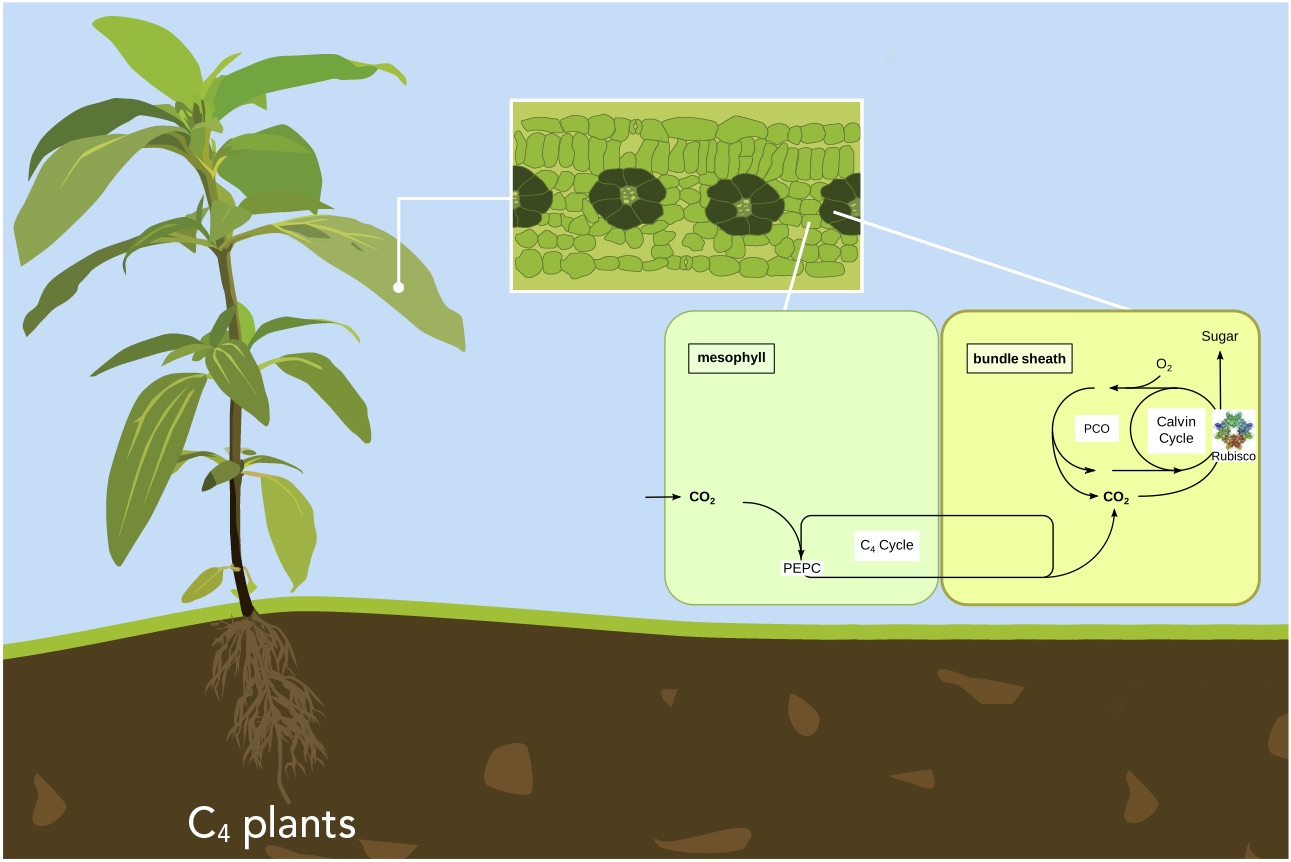The interesting ways of how plants use CO2 and light to create sugar and O2: C3, C4, and CAM photosynthesis
Imagine you are grocery shopping and your shopping list says: corncob, potatoes, and fresh pineapple. Your shopping list is more complex than you might think in the first place. The items are plants doing photosynthesis, but do you know that they differ strongly in how they create sugar and oxygen (O2) from light and carbon dioxide (CO2)?
There are three main types of photosynthesis - C3, C4, and CAM - showing different advantages and disadvantages. Therefore, the photosynthetic types preferentially found in specific environments, e.g., open habitats in warm and arid regions favor C4 plants.
Atmospheric CO2 provides carbon, the most important constituent of sugar. In all plants, the CO2 intake is processed by the enzyme Rubisco, as part of the metabolic process called Calvin cycle. Rubisco sometimes accidentally processes O2; this results in a toxic by-product which needs to be recycled by the PCO recycling. This pathway causes a significant loss of carbon and energy.
While C3 plants operate the Calvin cycle in a standard type of leaf cell, so called mesophyll cells, C4 plants operate it in a special cell type, bundle sheath cells, and use the enzyme PEPC for the initial intake of carbon. This enzyme exclusively takes CO2, which is assembled into C4 acids. These acids are transported into the special cell type, where they are split up to release the CO2 again. This creates a local high-CO2 environment around Rubisco, preventing the losses caused by the presence of O2. This so called C4 cycle comes with additional energy costs. Therefore, C4 plants require habitats with sufficient light intensities. In warm and arid regions, plants need to prevent water loss which goes along with insufficient CO2 supply. Therefore, C4 plants dominate open habitats in warm and arid regions.
Like C4 photosynthesis, CAM photosynthesis also separates the CO2 intake from the location of Rubisco. In CAM, however, these are separated temporally: Rubisco and the Calvin cycle are active during daytime, when the sun supplies energy to run this process. At night, when temperatures are low and water loss is minimal, CO2 is taken in. This mode of photosynthesis is extremely water-use efficient.
In my PhD project, I develop a mathematical model to predict the effect of environmental factors, such as light intensity and temperature, on the efficiency of CO2 intake. This model can be used to better understand C3 and C4 photosynthesis and the effect of environmental factors on C4 evolution. In this way, we contribute to find strategies on how to improve plants for current and future environments.
Esther Sundermann, Institute for Computational Cell Biology, Heinrich Heine University Düsseldorf
Planter’s Punch
Under the heading Planter’s Punch we present each month one special aspect of the CEPLAS research programme. All contributions are prepared by our young researchers.
Further Reading
Sage RF, Sage TL, & Kocacinar F (2012) Photorespiration and the evolution of C4 photosynthesis. Annual review of plant biology 63:19-47.
About the Author

The article was written by Esther Sundermann, who is a member of the CEPLAS Graduate School. In her PhD thesis she wants to better understand C3 and C4 photosynthesis and the effect of environmental factors. Therefore she is developing a mathematical model to be able to predict the effect of environmental factors, e.g. light intensity and temperature, on the efficiency of CO2 intake.
